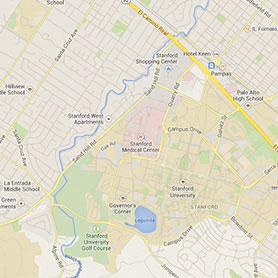New to MyHealth?
Manage Your Care From Anywhere.
Access your health information from any device with MyHealth. You can message your clinic, view lab results, schedule an appointment, and pay your bill.
ALREADY HAVE AN ACCESS CODE?
DON'T HAVE AN ACCESS CODE?
NEED MORE DETAILS?
MyHealth for Mobile
Obstructive Sleep Apnea
What Is Obstructive Sleep Apnea (OSA)?
Obstructive sleep apnea occurs when the airway completely or partially collapses repeatedly throughout the night. During sleep, the soft tissues in the throat relax. For someone with OSA (obstructive sleep apnea), these tissues can block the upper airway enough to disrupt sleep related breathing.
When the airway is blocked, the oxygen levels in the body drop causing the person to wake up long enough to begin breathing normally again. These awakenings are often very brief, sometimes only a few seconds, and this is the reason that the affected individual is often not aware that they have these awakenings during sleep. This pattern repeats during the night, and someone with severe sleep apnea may wake up hundreds of times each night. Even though the awakenings are usually very short, they fragment and interrupt the sleep cycle. This sleep fragmentation can cause significant levels of daytime fatigue and sleepiness, which is a common symptom of sleep apnea.
Obstructive sleep apnea in children
While some types of snoring can be considered benign in adults, snoring or noisy breathing is never normal in children. Obstructive sleep apnea in children is often overlooked in kids because the symptoms are more different in children than they are in adults and they tend to be more subtle. Not all children with OSA snore, and when they are tired they rarely nap, instead they become hyperactive (and may mimic those children with attention deficit-hyperactivity disorder) or develop behavioral problems. These behavioral problems may manifest themselves as irritability, lack of concentration, easy distractibility, and acting out which can lead to problems at school. Additionally, many children with obstructive sleep apnea are not overweight, so they don't fit the stereotypical picture of some with sleep apnea.
Children with medical conditions impacting the shape of their face, nose and airway or neuromuscular system are at a higher risk of developing sleep apnea. Parents of children with disorders such as Down Syndrome should be aware of the elevated risk and should be evaluated when there has been a change in behavior that may be related to OSA. Common symptoms of obstructive sleep apnea in children may include:
- Snoring
- Daytime cognitive and behavior problems, including problems paying attention, easy distractibility, aggressive behavior and hyperactivity
- Mouth breathing
- Enlarged tonsils and adenoids
- Problems sleeping and restless sleep
- Parasomnias such as sleep walking or night terrors
- Bed wetting
- Failure to thrive (weight loss or poor weight gain)
- Excessive daytime sleepiness
Condition Spotlight
Clinical Trials for Obstructive Sleep Apnea
Clinical trials are research studies that evaluate a new medical approach, device, drug, or other treatment. As a Stanford Health Care patient, you may have access to the latest, advanced clinical trials.
Open trials refer to studies currently accepting participants. Closed trials are not currently enrolling, but may open in the future.
Our Clinics
We have multiple locations to serve your needs. Visit one of our clinics to make an appointment.
Oral Medicine and Maxillofacial Surgery Clinic
724 Oak Grove AvenueMenlo Park, CA 94025
Phone: 650-723-7001
Obstructive Sleep Apnea
Learn about obstructive sleep apnea and discover the causes of obstructive sleep apnea in children from Stanford Health Care. Get treated for OSA today.
OSA
Obstructive Sleep Apnea
obstructive sleep apnea syndrome
obstructive sleep apnea in children
obstructive sleep apnea definition
obstructive sleep apnea treatment
Obstructive Sleep Apnea symptoms
Sleep Apnea Types
symptoms of Obstructive Sleep Apnea
Obstructive Sleep Apnea causes
obstructive sleep apnea causes
Obstructive Sleep Apnea diagnosis
causes of Obstructive Sleep Apnea
obstructive sleep apnea diagnosis
obstructive sleep apnea solutions
Forms of Sleep Apnea
diagnosis of Obstructive Sleep Apnea
obstructive sleep apnea devices
obstructive sleep apnea machine
obstructive sleep apnea medication
obstructive sleep apnea osa treatment
obstructive sleep apnea risks
obstructive sleep apnea side effects
obstructive sleep apnea treatment devices
Obstructive Sleep Apnea classification
Obstructive Sleep Apnea treatments
obstructive sleep apnea risk factors



